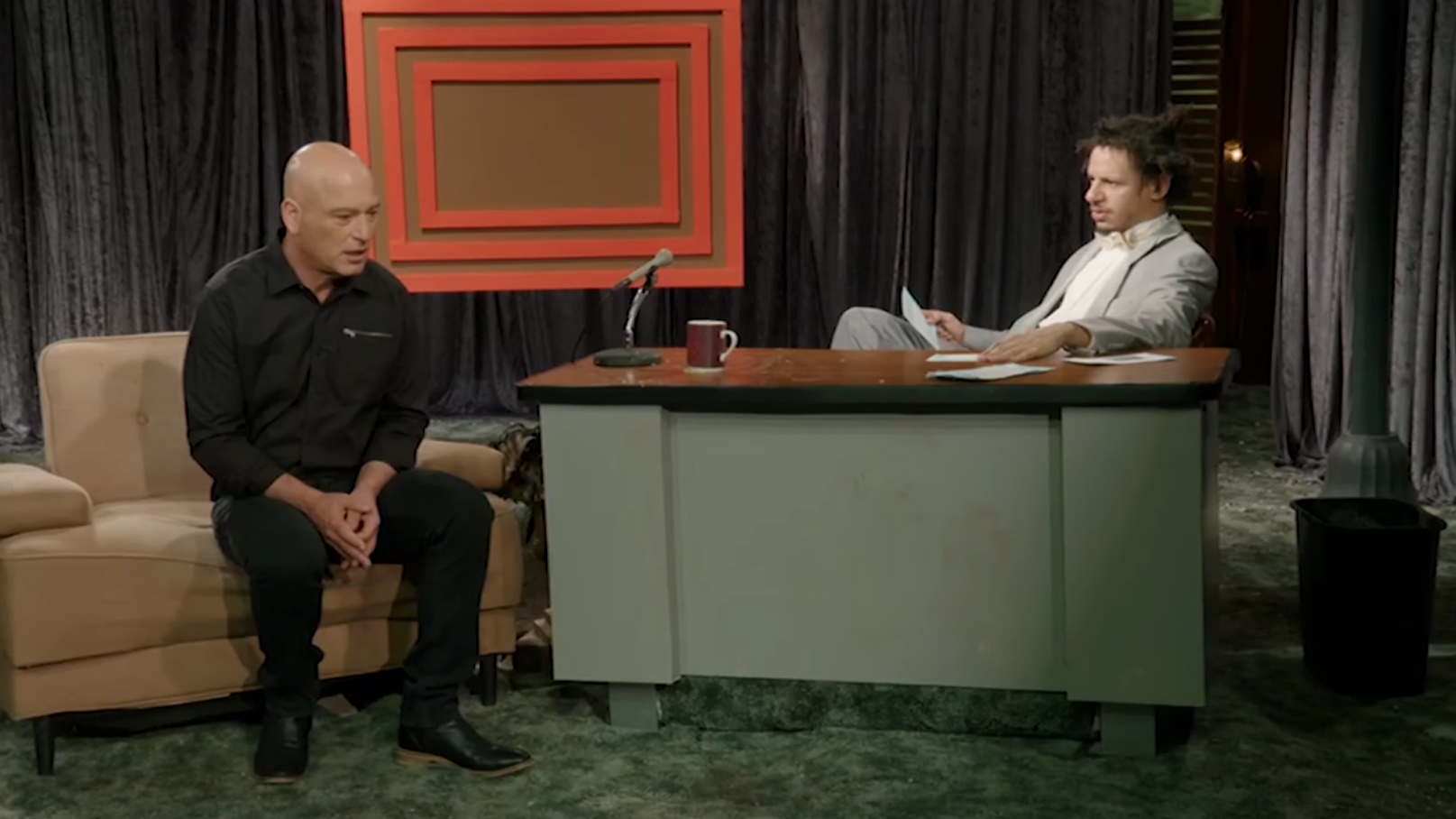What do you get when you cross a Berklee College of Music graduate and a comedian with $200 left in his bank account? The Eric Andre Show.
The mock talk show starts the same as any late night programming: an introductory bellow of “ladies and gentlemen,” a studio ensemble playing a distinct theme and a desk with a guest chair.
The show quickly devolves into chaos, usually involving the destruction of Andre’s set. During the show, he appears to play the role of an incompetent and provocative host whose goal is to make the guests uncomfortable. The result mirrors the feeling of watching a disaster so horribly captivating that you can’t avert your eyes. Andre’s jarring program takes the in-character talk show model of Ali G and conservative pundit Stephen Colbert to the brink of insanity with unsettling pranks and meandering dialogue.
Andre’s career as a performer did not begin with comedy but instead with music, starting piano lessons as a five-year-old. He would grow up considering interests in mathematics and law as well as music, but he settled on attending Berklee to study jazz.
His path from stand-up bass to stand-up comedy is far from conventional, but that did not stop Andre from pursuing his passion. His quest for a life in comedy pushed him to the edge, living paycheck-to-paycheck off of stand-up gigs and minor acting roles. He put together a pitch for Adult Swim, the nighttime programming on Cartoon Network, and was in need of a miracle when Adult Swim decided to pick up his show, a combination of in-studio monologues and man-on-the-street segments.
Comedian Hannibal Buress, his co-host, acts as a foil to Andre’s high-octane antics with his calm sensibility. He can sometimes come off as a regular guy with a greater degree of logic in comparison to Andre’s lunacy. When he isn’t eating food loudly or berating his co-host, Buress stands behind guests awkwardly and mumbles non sequiturs to add his personal style of comedy to the off-kilter show.
Sacha Baron Cohen successfully executed the bizarre talk show format in Da Ali G Show and George Lowe in Space Ghost Coast to Coast, but Andre has built on this brand of comedy by pushing the boundaries of what is socially acceptable.
Whether he is spilling boxes of fake bees on the subway in New York City or making Jack McBrayer cower in his chair from a set of shocking stunts, Andre is always pushing people’s buttons for comedic effect. All celebrity guests, both real and poorly imitated by actors, have to sit through Andre’s shenanigans during the studio portion of the show.
Ideal guests, it seems in Andre’s mind, are people who have no idea what they are getting into, allowing the provocative stunts to yield the most dramatic reactions possible. He has guests sign a release beforehand and has only been asked to take it back once by none other than Lauren Conrad, who exited mid-episode as Andre (fake) vomited on his desk and began to slurp it back up again.
Though you could never tell from watching his show, there is a real person beneath his façade of ineptitude. He never breaks character while on set, despite having people walk off set and express their horror with what is going on. He makes people uncomfortable, professionally.
Just like Nathan for You, a fake business advice reality show, Andre is playing a prank on the public for entertainment. They both rely on secrecy and genuine reactions for the spectacle they create. Where Andre pushes the envelope even further, however, is that he nabs unsuspecting celebrities as his social experiment subjects. There is something to be said for witnessing people who we often see flawlessly navigate interviews flounder as they try to figure out what is happening to them.
Overthinking the message of The Eric Andre Show misses the point entirely. The show is turbulence embodied, anarchic nonsense, a deranged manifesto of a comedian’s punk-rock talk show alter ego. There is no deeper social commentary. There is no symbolism. There is just chaos. Chaos for your viewing pleasure.



